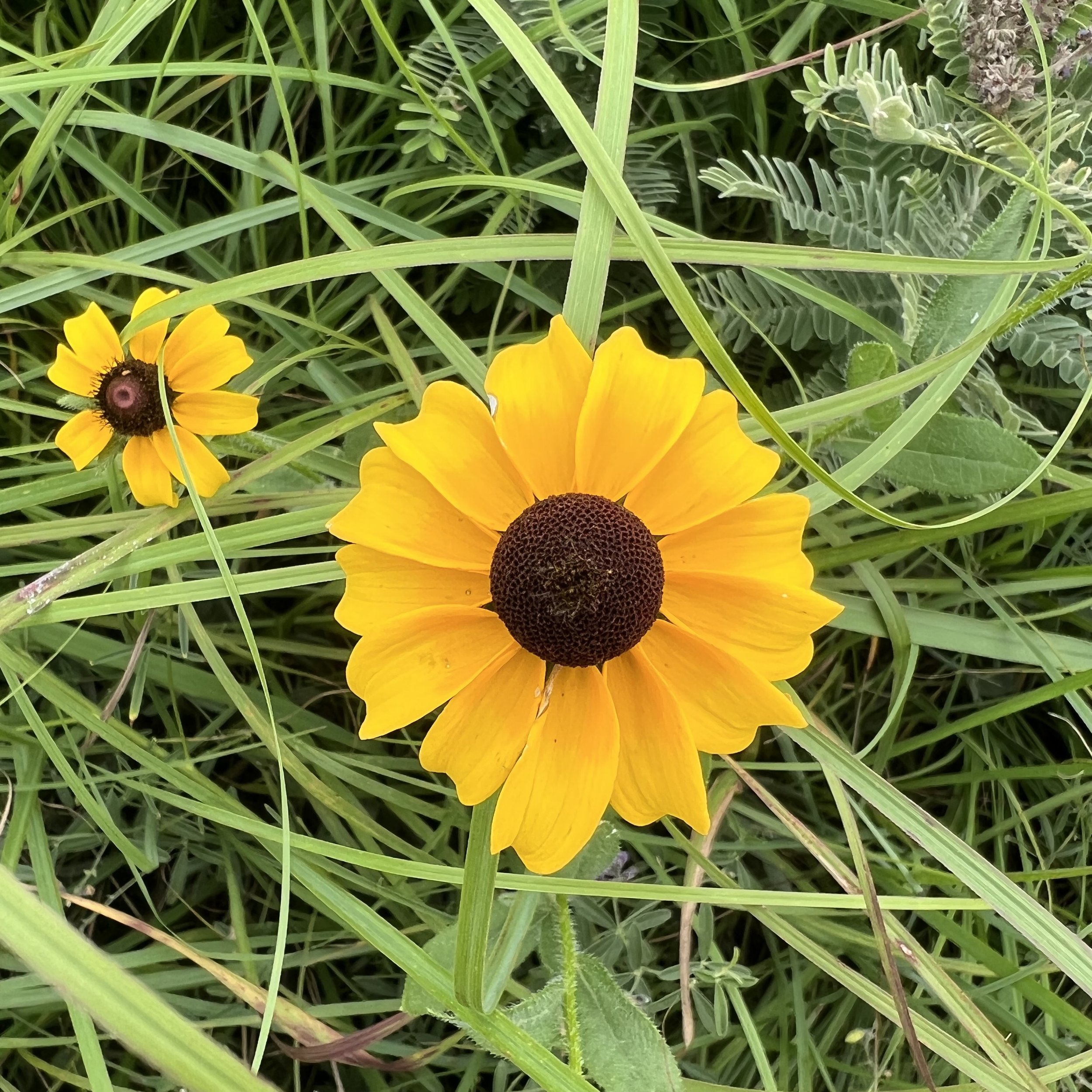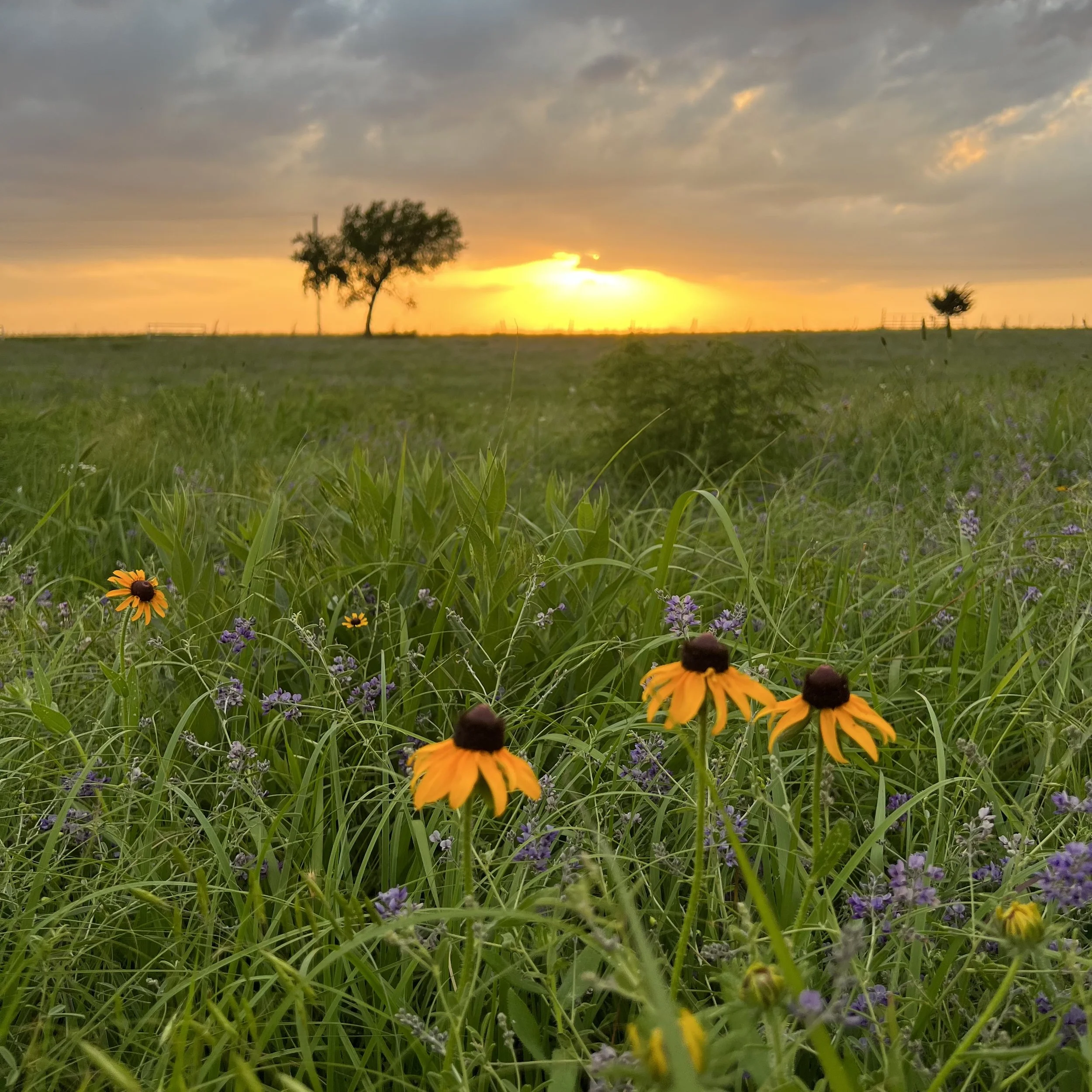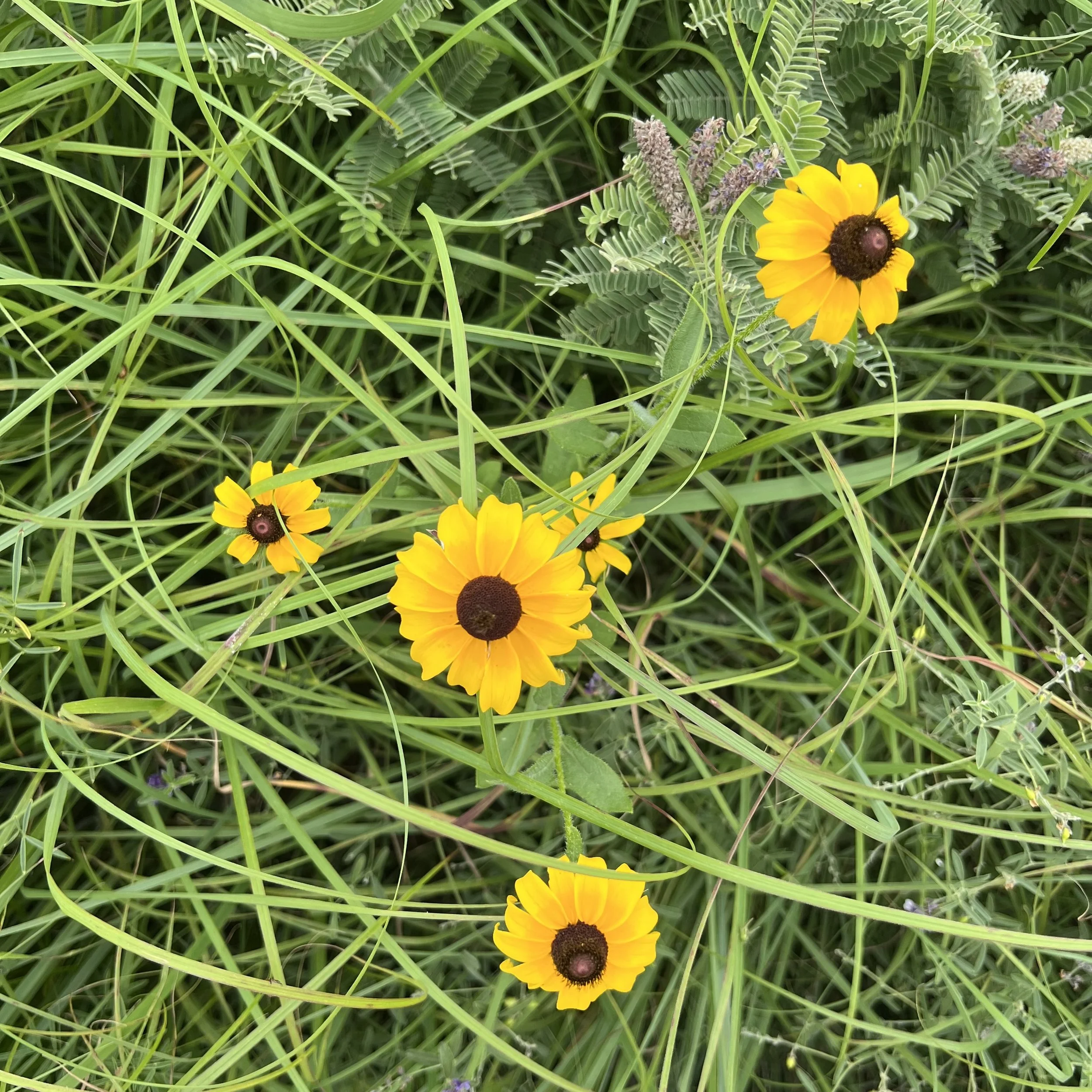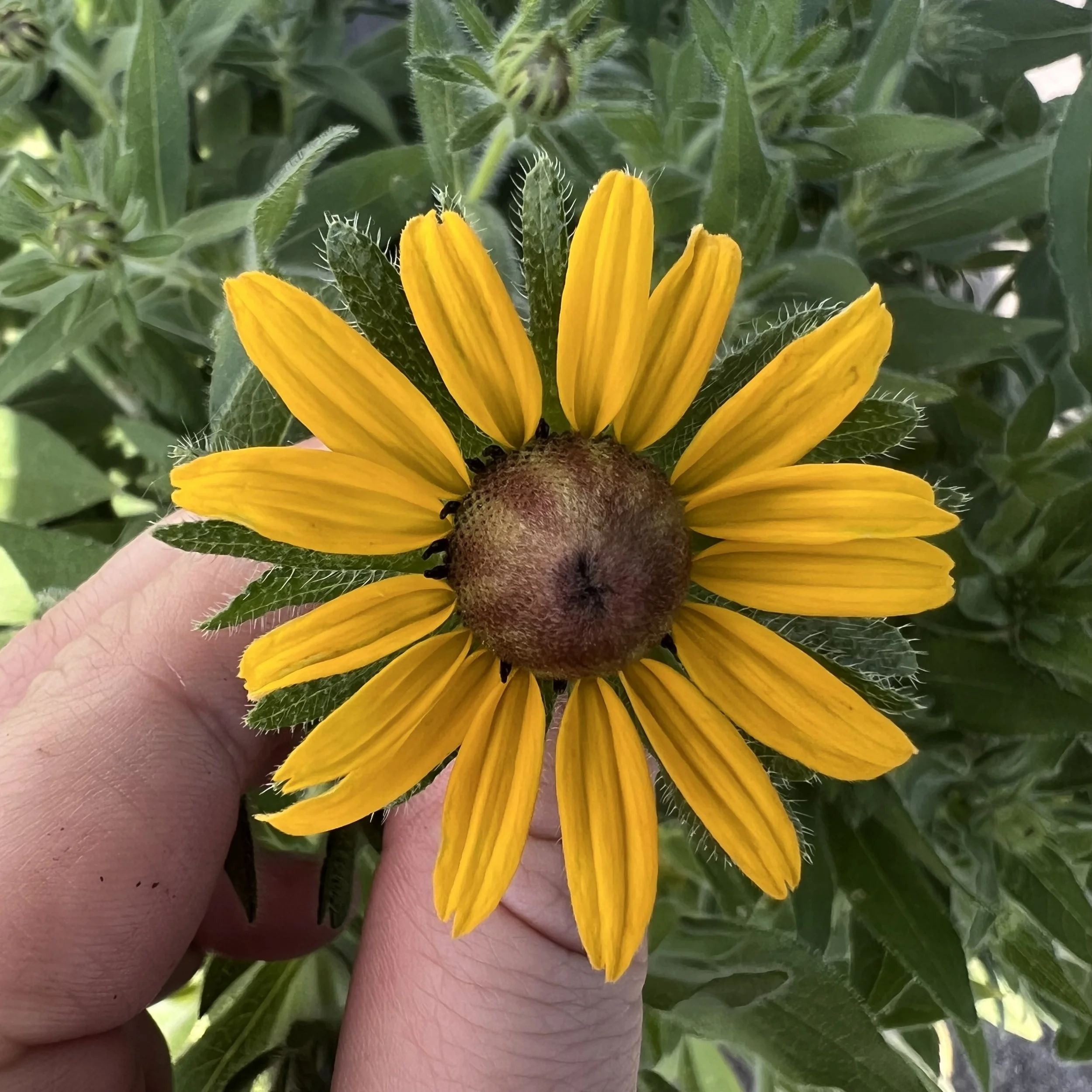-
Provide full to part sun (6+hrs/day).
This native was collected from the Flint Hills region of the Kansas prairie. Soil type is clay to loamy clay. This plant should do well in similar soil and can tolerate rocky areas as well.
Native to hardiness zone 6b (-5 to 0 °F).
-
Water regularly to establish in the first 1-2 months after planting. The foliage will wilt when water is lacking.
Black-eyed Susan does not need extensive nutrient support. If you know that your soil is poor, consider adding a small amount of compost at planting, working it evenly into the surrounding top 6-8” of soil.
-
Plant early in the growing season to ensure the plant has time to flower and go to seed before the first frost. It is best planted after soil has warmed in May/June.
-
Mid-Summer (June-September)
-
Rudbeckia hirta is annual, biennial or perennial depending on climate, environment and genetics factors in a given year. If annual, it will readily reseed itself. That is why I consider it to be a perennial of sorts in the landscape. It is persistent year to year! It WILL reseed readily and produce volunteer plants in subsequent years.
Foliage forms from the base and produces flower stems that stretch 1-2 feet tall. The plant forms from a taproot or fibrous root system.
-
In history, Rudbeckia hirta has been used by Indigenous people for medicinal value but also to dye materials.
Rudbeckia hirta





